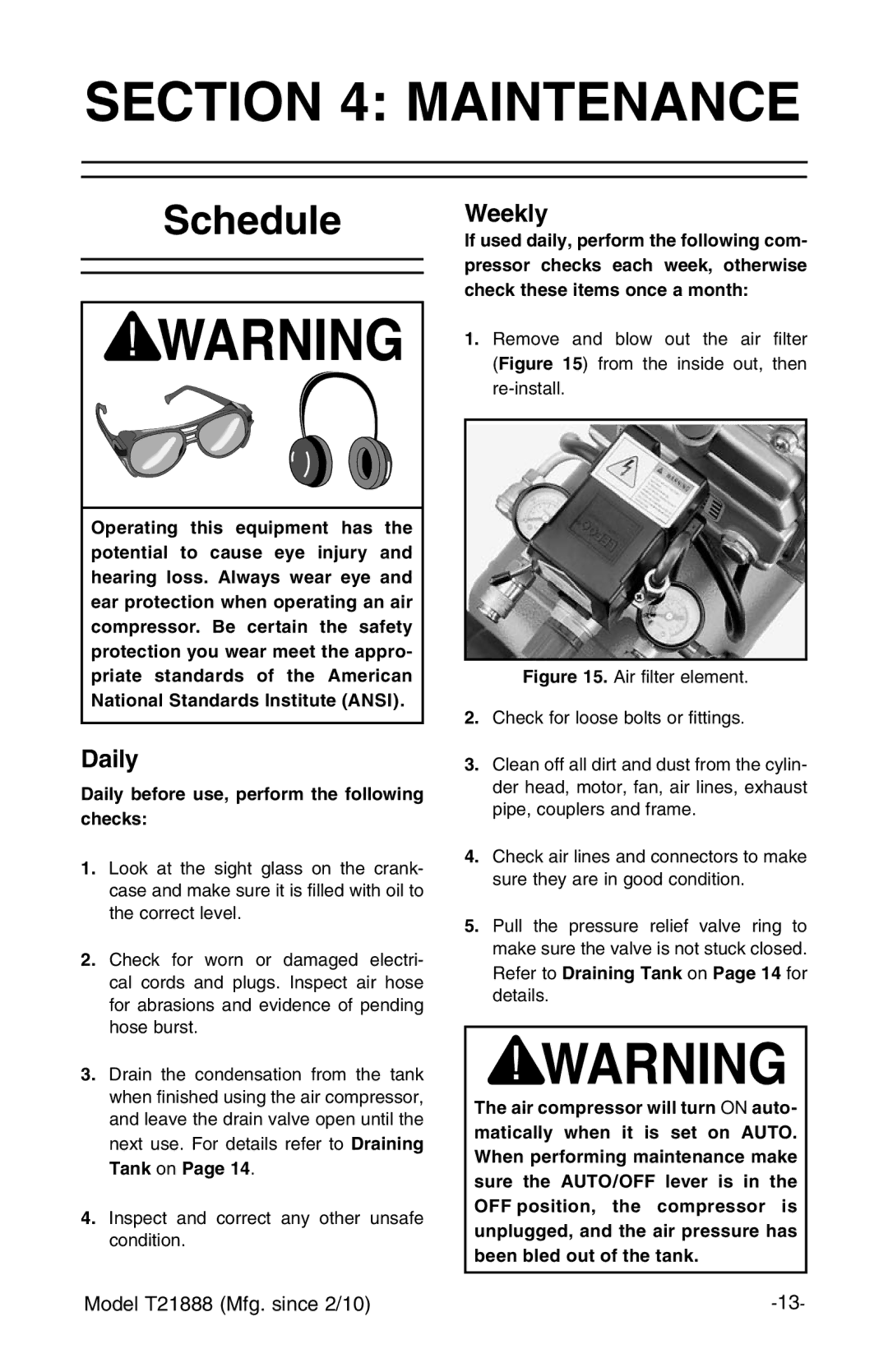
SECTION 4: MAINTENANCE
Schedule
Operating this equipment has the potential to cause eye injury and hearing loss. Always wear eye and ear protection when operating an air compressor. Be certain the safety protection you wear meet the appro- priate standards of the American National Standards Institute (ANSI).
Daily
Daily before use, perform the following checks:
1.Look at the sight glass on the crank- case and make sure it is filled with oil to the correct level.
2.Check for worn or damaged electri- cal cords and plugs. Inspect air hose for abrasions and evidence of pending hose burst.
3.Drain the condensation from the tank when finished using the air compressor, and leave the drain valve open until the next use. For details refer to Draining Tank on Page 14.
4.Inspect and correct any other unsafe condition.
Weekly
If used daily, perform the following com- pressor checks each week, otherwise check these items once a month:
1.Remove and blow out the air filter (Figure 15) from the inside out, then
Figure 15. Air filter element.
2.Check for loose bolts or fittings.
3.Clean off all dirt and dust from the cylin- der head, motor, fan, air lines, exhaust pipe, couplers and frame.
4.Check air lines and connectors to make sure they are in good condition.
5.Pull the pressure relief valve ring to make sure the valve is not stuck closed. Refer to Draining Tank on Page 14 for details.
The air compressor will turn ON auto- matically when it is set on AUTO. When performing maintenance make sure the AUTO/OFF lever is in the OFF position, the compressor is unplugged, and the air pressure has been bled out of the tank.
Model T21888 (Mfg. since 2/10) |
